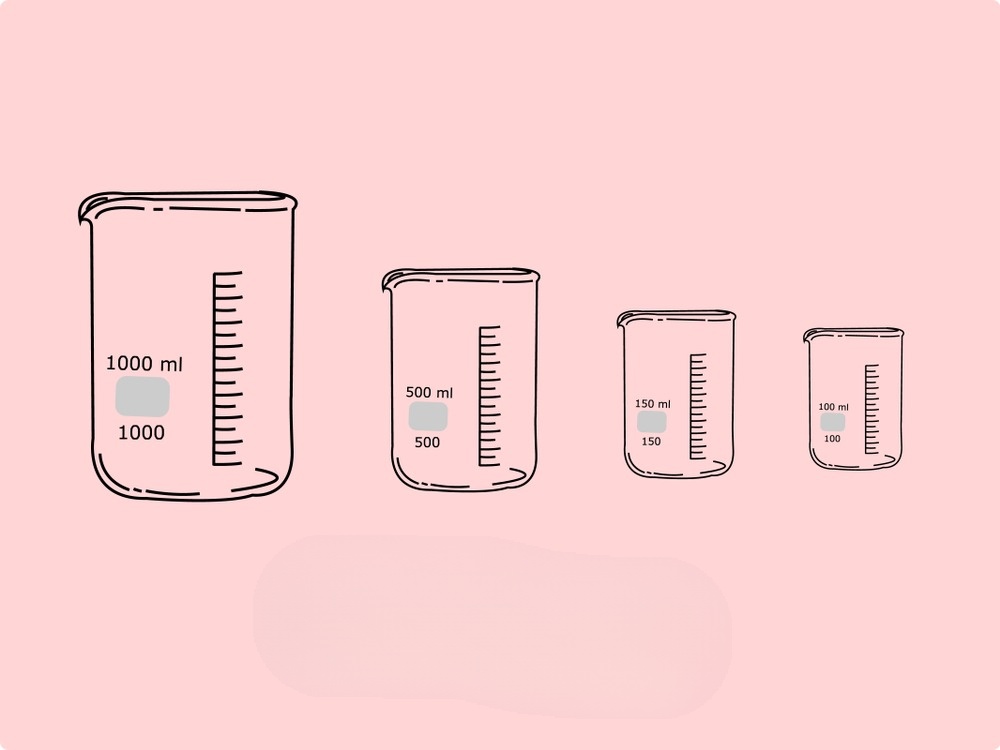150 ml is equivalent to 2/3 cup. So if you need to know how many cups is 150 ml of water, milk or any other liquid, the answer is 2/3 cups.
Converting 150 ml to Cups
Measuring cups are found in most kitchens and are used to measure fixed amounts of liquid or dry ingredients for cooking and baking recipes. When a recipe calls for 150 ml of an ingredient, it’s helpful to know how to convert that metric volume to cups to use your measuring cups.
How many cups is 150 ml of water/milk?
Most measuring cups in the United States are based on the U.S. customary system of units and have both liquid and dry measurements marked. For liquid ingredients, the most common sizes are 1 cup (240 ml), 1/2 cup (120 ml), 1/3 cup (80 ml), and 1/4 cup (60 ml).
To convert 150 ml to cups, you can determine that 150 ml is equal to 2/3 of a cup. So if a recipe calls for 150 ml of milk or water, you would measure out 2/3 cups using a liquid measuring cup.
Measuring cups and their variations
While standard measuring cups are based on even fractions of a cup, some variations like 3/4 cup or 2/3 cup make converting metric volumes easier. A 2/3 cup measuring cup would allow you to directly measure 150 ml without any math required.
Measuring cups also come in different materials like plastic, metal, or glass. The capacity can vary slightly between manufacturers, so check the markings on your own cups when measuring 150 ml.
For the most consistent results, liquid ingredients should be measured in a clear liquid measuring cup with the liquid at eye level to read the meniscus (curved surface) accurately.
Scientific notations
The metric volume 150 ml can also be written as 0.15 liters or 150 cubic centimeters (cm3).
1 liter is equal to 1000 ml, so 0.15 liters is the same as 150 ml. The scientific notation uses a decimal point followed by the number of liters.
Since 1 ml is the same as 1 cm3, 150 ml is equivalent to 150 cm3. So another way to denote 150 ml is 150 cubic centimeters.
Other Conversions for 150 ml
In addition to US cups, 150 ml can be converted to other metric volumes and common baker’s percentages.
Percentage
Baker’s percentages represent the weight of each ingredient as a percentage of the total flour weight. Since percentages are already relative to different batch sizes, they allow scaling recipes up or down easily.
For bread recipes, the total weight of the flour is often defined as 100%. Then the percentage of other ingredients is calculated based on that 100% benchmark weight.
If a bread recipe had 300g flour total and called for 150 ml (150g) water, the water would be 50% of the flour weight (150g water / 300g flour = 50%).
So 150 ml converts to 50% baker’s percentage for bread recipes based on a 300g flour weight. For other recipes, you simply calculate the percentage relative to the given flour weight.
Drop measurements
Small amounts of potent liquid ingredients like extracts or flavorings are often measured in drops from a dropper instead of by volume.
As an estimate, 150 ml is approximately:
- 900 drops of water
- 720 drops of vanilla extract
- 600 drops of almond extract
The actual number of drops per milliliter depends on the viscosity of the liquid and dropper used, so this gives an approximate conversion.
Commonly Asked Questions
Here are answers to some frequently asked questions about converting and measuring 150 ml.
How much is 150 ml of water/milk?
150 ml equals 2/3 cup or approximately 5 fluid ounces of water, milk, or any other liquid ingredient.
How to measure 150 ml without a measuring cup?
If you don’t have measuring cups handy, 150 ml is about the volume of a small yogurt container or half of a standard coffee mug. For a more precise conversion without cups, 150 ml equates to 2.5 ounces by weight of water.
Is 150 ml the same as 150 mg?
No, 150 ml and 150 mg are very different units. Milliliters (ml) measure volume while milligrams (mg) measure weight. 150 ml is equivalent to 150 grams (g) by weight, not 150 mg. Be careful not to confuse measurements of volume and weight.
Conclusion
When a recipe calls for 150 ml of liquid, now you know it converts to 2/3 cup based on common US measuring cups. This volume also equals 0.15 liters or 150 cubic centimeters in scientific metric notation. Understanding liquid conversions helps both in following recipes accurately and adjusting ingredient amounts. So next time you come across 150 ml in a recipe, you can measure out 2/3 cup and continue cooking with confidence.



